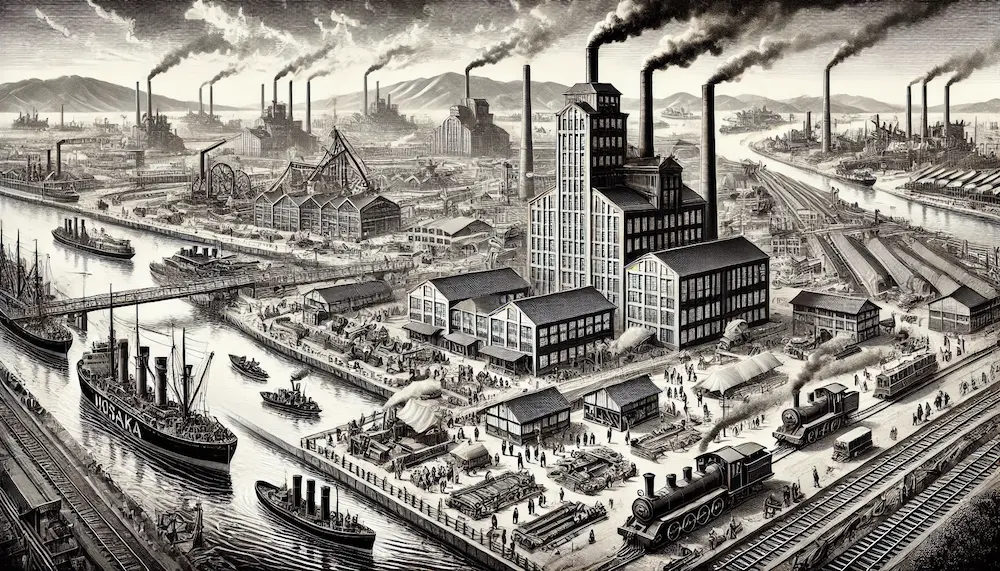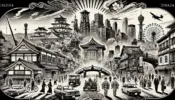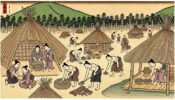The Meiji Restoration and Modern Osaka: A Transformation from Tradition to Progress
Osaka, a city renowned for its vibrant food scene and friendly locals, is also a testament to Japan’s remarkable modernization during the Meiji era. The Meiji Restoration of 1868 marked a pivotal moment in Japanese history, ushering in an era of rapid industrialization, Westernization, and social change. Osaka, with its strategic location and entrepreneurial spirit, played a crucial role in this transformation, evolving from a traditional merchant city into a bustling industrial and cultural powerhouse.
Osaka’s Industrial Boom
The Meiji government’s push for industrialization ignited Osaka’s economic engine. Factories sprang up, churning out textiles, ships, and steel, propelling Osaka to the forefront of Japan’s industrial revolution. By the early 20th century, Osaka was dubbed the “Manchester of the Orient,” a testament to its thriving textile industry. The city’s strategic location, with access to major waterways and a well-developed port, further fueled its economic growth. The construction of railroads and canals enhanced connectivity, facilitating the movement of goods and people, and solidifying Osaka’s position as a major commercial hub.
Social Changes and Westernization
The Meiji era also brought significant social changes to Osaka. The influence of Western ideas and technologies permeated every aspect of life, from fashion and architecture to education and social norms. A new merchant class emerged, amassing wealth and influence through trade and industry. These entrepreneurs, eager to embrace modernity, funded the construction of schools, hospitals, and cultural institutions, contributing to Osaka’s transformation into a modern metropolis.
Osaka’s Modern Landmarks
Osaka’s skyline today is a testament to its Meiji-era modernization. The iconic Osaka Castle, rebuilt in the 20th century, stands as a symbol of the city’s resilience and its embrace of both tradition and progress. Nakanoshima, an island in the heart of Osaka, developed into a modern business and cultural district, boasting architectural gems like the Osaka City Central Public Hall. The towering Tsutenkaku Tower, completed in 1956, became a symbol of Osaka’s post-war recovery and economic resurgence.
Osaka’s Unique Culture
Amidst its rapid modernization, Osaka retained its distinctive culture, characterized by its love of food and its vibrant sense of humor. The city’s “Kuidaore” spirit, meaning “eat till you drop,” is evident in its countless restaurants and street food stalls, offering a tantalizing array of local delicacies like takoyaki (octopus balls) and okonomiyaki (savory pancakes). Osaka is also the birthplace of “Manzai,” a traditional form of stand-up comedy known for its fast-paced dialogue and witty wordplay.
Conclusion
Osaka’s journey from a traditional city to a modern metropolis is a testament to the transformative power of the Meiji Restoration. Today, Osaka continues to be a major economic and cultural center in Japan, attracting visitors with its unique blend of tradition and modernity. Whether you’re exploring its historic landmarks, indulging in its culinary delights, or enjoying its lively entertainment scene, Osaka offers a truly unforgettable experience. So, come and discover the dynamic spirit of Osaka, a city that embodies the essence of Japan’s modernization.









